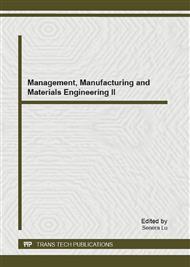p.415
p.420
p.426
p.432
p.437
p.449
p.454
p.459
p.464
Mathematical Decomposition for Influence Factors of Unit GDP Energy Consumption and Demonstration in China
Abstract:
Analysed various influence factors of unit GDP energy consumption, discussed the mathematical decomposition and calculation method and did empirical analysis of the influence and role on unit GDP energy consumption changes since “The Fifth Five-Year Plan”.The main conclusions are:(1) the drop of the energy efficiency is caused both by technical factors and structural factors , in which structural factors being the fundamental reason during the Eleventh Five-Year period. (2) technological energy saving is the main direct driving force of the dramatic decrease in energy intensity of China , and the alternation of structural energy saving from negative to positive is the crucial factor determining the dramatic decrease of the energy intensity of China ,and energy-saving in livelihood is a stable impetus for improving China energy efficiency improvement in the Eleventh Five-Year period .The research provided the methodological foundation for exploring the specific ways to achieve the energy efficiency goal of “The Twelfth Five-Year Plan” and also to provide a reference for the policy making of “The Twelfth Five-Year Plan” energy efficiency.
Info:
Periodical:
Pages:
437-448
Citation:
Online since:
December 2012
Authors:
Price:
Сopyright:
© 2013 Trans Tech Publications Ltd. All Rights Reserved
Share:
Citation:


